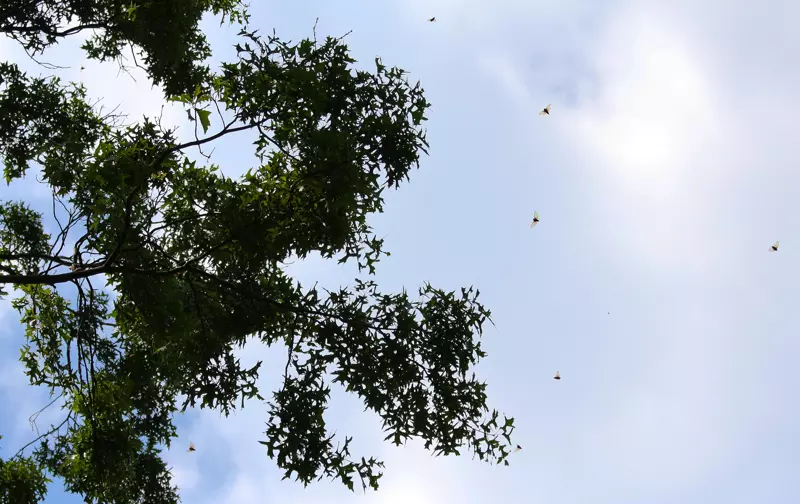A new paper has been published titled A molecular phylogeny of the cicadas (Hemiptera: Cicadidae) with a review of tribe and subfamily classification by David C. Marshall, Max Moulds, Kathy B. R. Hill, Benjamin W. Price, Elizabeth J. Wade, Christopher L. Owen, Geert Goemans, Kiran Marathe, Vivek Sarkar, John R. Cooley, Allen F. Sanborn, Krushnamegh Kunte, Martin H. Villet, Chris Simon.
The paper was published in Vol 4424, No 1 of Zootaxa. Link to paper.
In a nutshell: These researchers compared the DNA of a variety of cicadas to determine how they are related evolutionarily and how they should be organized in terms of tribes and sub-families.
Abstract:
A molecular phylogeny and a review of family-group classification are presented for 137 species (ca. 125 genera) of the insect family Cicadidae, the true cicadas, plus two species of hairy cicadas (Tettigarctidae) and two outgroup species from Cercopidae. Five genes, two of them mitochondrial, comprise the 4992 base-pair molecular dataset. Maximum-likelihood and Bayesian phylogenetic results are shown, including analyses to address potential base composition bias. Tettigarcta is confirmed as the sister-clade of the Cicadidae and support is found for three subfamilies identified in an earlier morpho- logical cladistic analysis. A set of paraphyletic deep-level clades formed by African genera are together named as Tettigo- myiinae n. stat. Taxonomic reassignments of genera and tribes are made where morphological examination confirms incorrect placements suggested by the molecular tree, and 11 new tribes are defined (Arenopsaltriini n. tribe, Durangonini n. tribe, Katoini n. tribe, Lacetasini n. tribe, Macrotristriini n. tribe, Malagasiini n. tribe, Nelcyndanini n. tribe, Pagi- phorini n. tribe, Pictilini n. tribe, Psaltodini n. tribe, and Selymbriini n. tribe). Tribe Tacuini n. syn. is synonymized with Cryptotympanini, and Tryellina n. syn. is synonymized with an expanded Tribe Lamotialnini. Tribe Hyantiini n. syn. is synonymized with Fidicinini. Tribe Sinosenini is transferred to Cicadinae from Cicadettinae, Cicadatrini is moved to Ci- cadettinae from Cicadinae, and Ydiellini and Tettigomyiini are transferred to Tettigomyiinae n. stat from Cicadettinae. While the subfamily Cicadinae, historically defined by the presence of timbal covers, is weakly supported in the molecular tree, high taxonomic rank is not supported for several earlier clades based on unique morphology associated with sound production.























